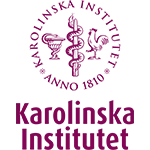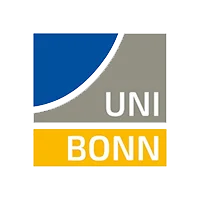Explore the credit course catalogue
38 Results

The "Clinical Research in Child and Adolescent Psychiatry: Methods and Practice" course aims to cover a range of methodological factors in clinical trials on youths with psychiatric disorders, including psychiatric assessment and psychological as well as pharmacological treatment. The course will provide broad as well as in-depth knowledge about methodological and practical aspects of clinical psychiatric research focusing on children and adolescents. The course also addresses good clinical practice principles and Swedish and international rules and regulations relevant to clinical research involving young individuals.

The course covers the theoretical background to the brain imaging methods sMRI, fMRI, PET, EEG and MEG, such as what aspects of the human brain's structure and function they register, and the operation principles of the imaging instruments. The coursed gives the student a good understanding in how the different methods are used within in academic research as well as within health care. The course also addresses how the imaging methods can be combined in multimodal analyses, and discusses the interplay between development of theory, instrumentation, method, and applications.
The course begins with an introduction to brain imaging methods within neuroscience. In separate course modules, the course then offers the student a deeper understanding of the different methods sMRI, fMRI, PET, EEG and MEG, as well as combining them in multimodal brain imaging. Finally, the students will deepen their knowledge on a topic of their choice in an individual study project.

This course aims to introduce students to health care organization and management, and how this affects public health. There is a special focus on the opportunities offered by digitization and how these can be utilized in quality and improvement work.

Topics covered include:
- Hearing and speech perception and associated disorders (e.g., hearing loss, deafness, tinnitus)
- Vestibular function and associated disorders
- Objective electrophysiological measures: auditory and/or vestibular evoked responses (ECochG, BERA, ASSR, CERA, VEMP)
- Behavioural experiments (psychoacoustics)
- Principles of hearing rehabilitation with neural prostheses, i.e., cochlear implants
- Research methods in audiology/auditory neuroscience
- Application of methodology (in patients, if possible)
- How to design and conduct research projects

Topics covered include:
- Computational design strategies
- Differential equations
- Programming in Python
- Data analysis

Topics covered include:
- Experimental design strategies
- Fluorescent immuno-histochemistry
- Confocal Microscopy
- Intra-vital Microscopy (e.g. two-photon, three-photon, 2P-STED, ...)
- Data analysis
- Behaviour

Topics covered include:
- Tissue isolation and cryosectioning
- Immunofluorescent staining/Western blots
- Tissue isolation and cryosectioning
- Imaging (e.g. Confocal microscopy, Slide scanner etc.)
- (Semi-) automated image anaylsis (e.g. Fiji, machine learning based analysis)

Topics covered include:
- Coding: basic concepts, practical training, testing
- Foundations of sensor technologies
- Foundations of Bluetooth communication
- Usage of advanced programming interfaces (APIs)
- Analysis of time series data
- Introduction to machine learning techniques

Topics covered include:
- CRISPR/Cas9 mediated genome editing in mammalian cell lines
- CRISPRoff genome editing tools to modify activity of gene promoters
- Cloning of promoter regions and relevant proteins into reporter gene and mammalian expression vectors
- Reporter gene assays to measure activity of gene promoters or unknown DNA sequences using plate luminometer
- Chemical modification of genomic DNA for DNA methylation analysis
- Pyrosequencing for detection and quantification of DNA methylation
- Chromatin preparation and chromatin immunoprecipitation analysis
- Standard PCR and quantitative reverse transcription PCR analysis
- Transfection and expression of relevant proteins in mammalian cells
- Western blotting for protein analysis

Topics covered include:
- rAAV-guided engram labeling techniques (Cal-Light, SomCal-Light, FLARE)
- Tissue engineering (FluoClearBABB, ExM)
- Large-field superresolution microscopy
- AI-guided behavioral classification
- Multifactorial behavioral classification

Topics covered include:
- Histological preparation of rodent sensory organs
- Immunohistochemistry on mole-rat and mouse neuronal tissues
- 3D histology using tissue clearing
- Fluorescence microscopy, Light sheet microscopy
- Behavioural assessment of magnetic orientation under controlled conditions

Topics covered include:
- Assessment of memory and imagination in patients with neurodegenerative dementias and related to aphantasia
- Rating of patients’ memory reports
- Analysis of patient data
- Writing summary reports

Topics covered include:
- animal models to study epileptogenesis
- *omics analyses of human epileptic specimen
- Screening analyses for classical auto-antibodies and new candidates inpatients suspicious for limbic encephalitis
- Analyzing the functional role of patient-derived auto-antibodies in epilepsy in vitro und in vivo
- Analyzing synchronous network activity in vitro (multi electrode array; MEA)
- CrispR-Cas systems to interfere with epileptogenesis
- Generation of animal models to study limbic encephalitis
- Neuropathology in experimental LE

Topics covered include:
- Hypothesis driven planning and design of experiments for research project
- Cloning, colony cracking and transfection
- Cell culture and life cell imaging
- Imaging and data analysis
- Application of techniques depend on individual working plan

Topics covered include:
- How to design, code (C#, Unity) and conduct virtual reality experiments
- How to record, time-sync and real-time access physiological data streams during virtual reality experiments (based on LabStreamingLayer)
- How to analyse psychophysiological data (e.g.: wireless EEG, EMG, EDA, HRV or Eyetracking), using common Matlab-packages such as EEGLAB or LEDALAB

Topics covered inlude:
- Cognitive neuroscience of social perception and cognition
- Dysfunctions of social perception and cognition
- Research methods in social neuroscience (signal detection theory; metacognition; experimental psychology; classification methods)
- Experimental design

Students will have the opportunity to:
- work with various model systems (e.g. different cell lines, C. elegans and tissue from transgenic mice
- perform different biochemical analysis assays (e.g. Western blot, RT-PCR)
- immunohistechemical stainings and confocal imaging
In addition to hands-on practical methods, students will attend scientific lectures and seminars.

Topics covered include:
- Reconstruction of neuron morphologies
- Histological preparation of brain tissue
- Electrophysiological recordings of single neurons in vivo
- Simulations of cellular function via multi-compartmental neuron models

This course covers acquisition and advanced analysis of MRI-data in clinical research including scanning
routines, tractography, tract-based spatial statistics, voxel-based morphometry and
support machine vector programming.

Topics covered include:
- mechanisms of neuron-astrocyte signal exchange in the hippocampus and their relevance for synaptic transmission and its plasticity, for hippocampus-dependent cognitive processes and behaviors such as spatial navigation
- research methods will be selected from:
- multiphoton fluorescence imaging and its applications for studying astrocyte/neuron signaling (e.g. Ca2+ imaging) and structural plasticity
- advanced imaging techniques of optical indicators (e.g. FRET, FLIM) and indicator development (e.g. in HEK cells, acute brain slices)
- electrophysiological methods like the patch clamp technique
- super-resolution microscopy (expansion microscopy)
- introduction to behavioral analyses (e.g. spatial memory, machine-learning based analysis)

Topics covered include:
- Principles of optogenetic Actuators
- Cell-type specific expression techniques for optogenetic actuators
- Technologies to achieve light-based optogenetic Stimulation in-vitro and in-vivo
- Combination of optogenetic techniques with patch-clamp techniques

Topics covered include:
- Mouse model of temporal lobe epilepsy
- Patch clamp analysis and single cell RT-PCR
- Analysis of gap junction-mediated astrocyte coupling by tracer diffusion assays
- Analysis of seizure activity by EEG and video monitoring
- Immunoblot analysis and Real-Time PCR
- Immunohistochemical staining and confocal microscopy

Topics covered include:
- Electrophysiological recording techniques
- Design of cognitive paradigms
- Spike detection and spike sorting
- Peri-stimulus time histograms
- Data analysis and statistical evaluation

Topics covered include:
- chemical modification of genomic DNA
- assay design for targeted DNA methylation analysis
- pyrosequencing for detection of DNA methylation
- histological analyses of epigenetic modifications on histones and DNA
- functional cell assays
- glioma cell culture

Topics covered include:
- DNA isolation from human tissues
- Detection of mtDNA mutations in human samples by various PCR-based techniques
- Detection and quantification of multiple mtDNA deletion by single-molecule PCR
- mtDNA sequencing and deletion mapping

Topics covered include:
- Cloning of relevant proteins into mammalian and bacterial expression vectors
- Expression of relevant proteins in mammalian and bacterial cell culture systems (Transfection, viral transduction)
- Protein extraction from mammalian and bacterial cells
- Protein analysis - western immunoblotting, analysis of protein-protein interactions
- Analysis with immunocytochemical techniques – microscopy
- Live cell imaging

Topics covered include:
- Basics of MRI and functional MRI
- Design of psychological experiments
- Analysis of functional MRI data
- Functional Neuroanatomy

Topics covered include:
- Cloning of relevant proteins into mammalian and bacterial expression vectors
- Expression of relevant proteins in mammalian and bacterial cell culture systems
- Protein extraction from mammalian and bacterial cells – subcellular fractionation
- Protein analysis - western immunoblotting, immunoprecipitation
- Analysis with immunocytochemical techniques – microscopy

Topics covered include:
- Application of immunohistochemistry combined with tissue clearing and subsequent expansion of labeled structures
- Training in confocal fluorescence microscopy
- Ultrastructural analyses and quantification of synaptic proteins under different experimental conditions
- Exploration of synaptic structure and perisynaptic glia

Topics covered include:
- Basics of cell culture and tissue analysis
- Functional bio-assays related to neuroinflammation
- Molecular analysis of cells and tissues samples
- Flow cytometry (FACS) analyses of cells
- Confocal imaging analyses of tissue


